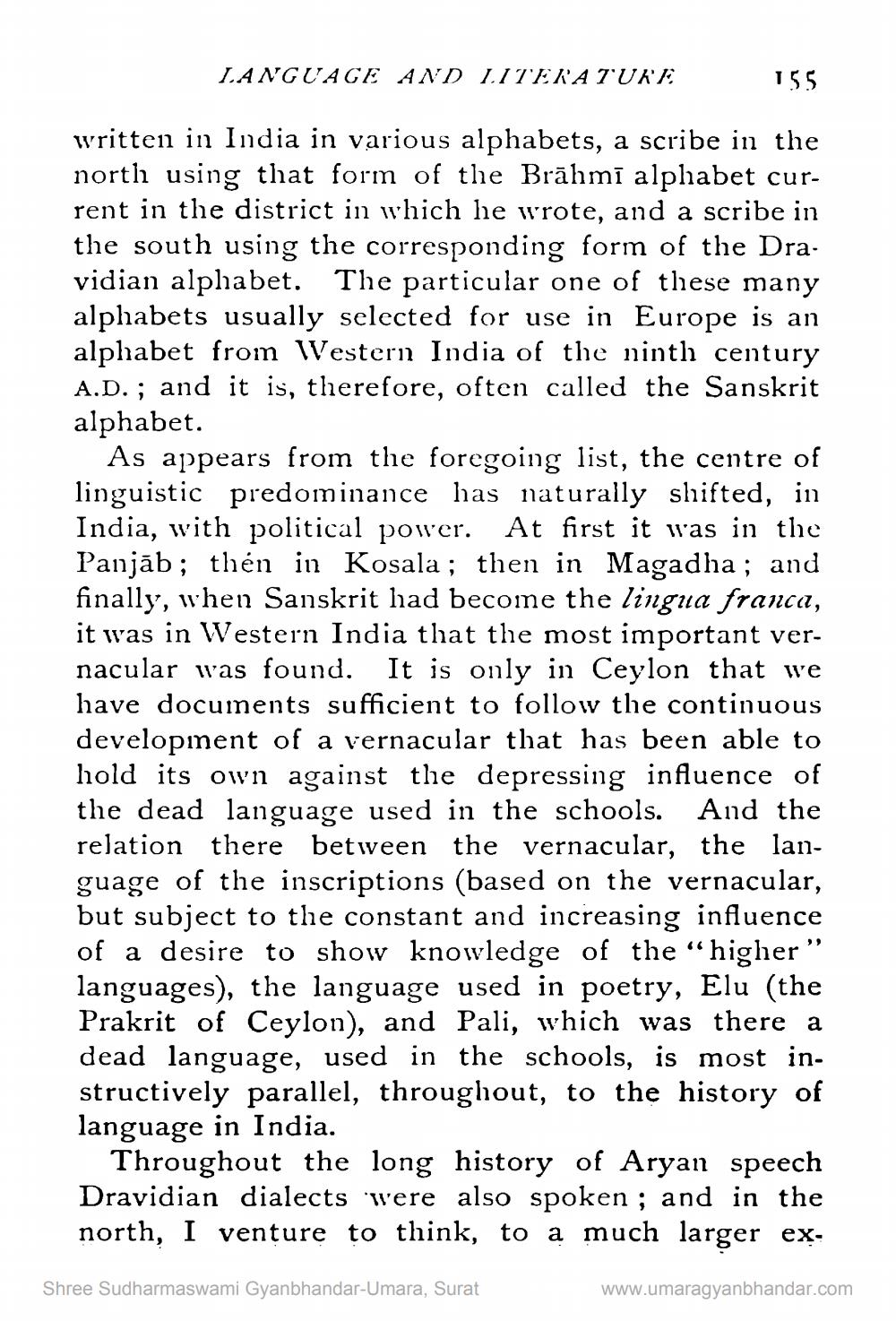________________
LANGUAGE AND LITERATURE
155
written in India in various alphabets, a scribe in the north using that form of the Brāhmi alphabet current in the district in which he wrote, and a scribe in the south using the corresponding form of the Dra. vidian alphabet. The particular one of these many alphabets usually selected for use in Europe is an alphabet from Western India of the ninth century A.D.; and it is, therefore, often called the Sanskrit alphabet.
As appears from the foregoing list, the centre of linguistic predominance has naturally shifted, in India, with political power. At first it was in the Panjāb; then in Kosala ; then in Magadha; and finally, when Sanskrit had becoine the lingua franca, it was in Western India that the most important vernacular was found. It is only in Ceylon that we have documents sufficient to follow the continuous developinent of a vernacular that has been able to hold its own against the depressing influence of the dead language used in the schools. And the relation there between the vernacular, the language of the inscriptions (based on the vernacular, but subject to the constant and increasing influence of a desire to show knowledge of the “higher" languages), the language used in poetry, Elu (the Prakrit of Ceylon), and Pali, which was there a dead language, used in the schools, is most instructively parallel, throughout, to the history of language in India.
Throughout the long history of Aryan speech Dravidian dialects were also spoken ; and in the north, I venture to think, to a much larger ex.
Shree Sudharmaswami Gyanbhandar-Umara, Surat
www.umaragyanbhandar.com




